

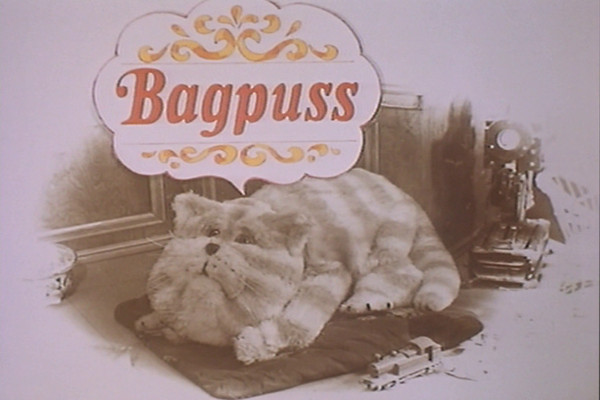
Repeats stopped in the late 80s, when the BBC began to think the series had become too old-fashioned for the time, though its success in a 1999 BBC poll to find the greatest childrens' programme - it came first - saw them rethink their decision. It remains a popular series to this day, and a Bagpuss microsite has been a regular fixture of The Anorak Zone almost from its inception. Please join me as I rank the entire series, from worst to best...
This article has also featured as part of the Bagpuss microsite Bagpuss & Co.
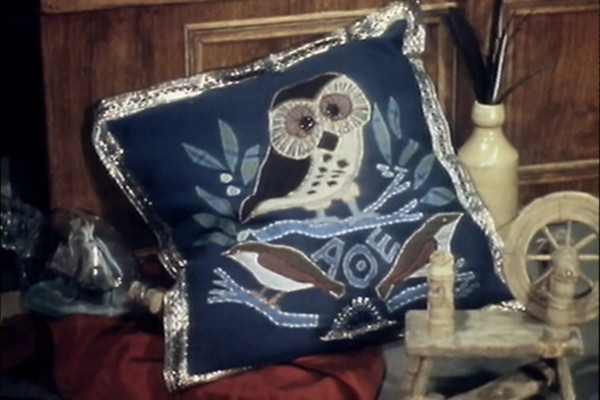
There's no episode of Bagpuss that's actually bad, and so The Owls of Athens gets last place just by being not as good as at least nine other episodes. It's also the only episode to feature characters playing doubles... a couple of the mice appear in costume in the court of the Bony King, yet are clearly not supposed to be any of the much-loved six that appear in each regular episode.
Oliver Postgate discusses how the limitations of the format dictated the set up in his engaging autobiography Seeing Things. The original idea belonged to puppet maker and co-creator Peter Firmin, who planned to have Bagpuss as an old Indian Army cat telling stories to children in a hospital ward of the Raj. However, the stop motion animation meant that real children couldn't interact with the characters, and the same limitations meant that there could be no customers seen in the shop. Consequently it became a lost and found shop where items would be left to be collected, with Postgate looking around for inspiration. The actual object in this one, a cushion depicting the owls of the title, was made by Firmin's wife Joan... their daughter Emily played the shop owner in the still photographs.
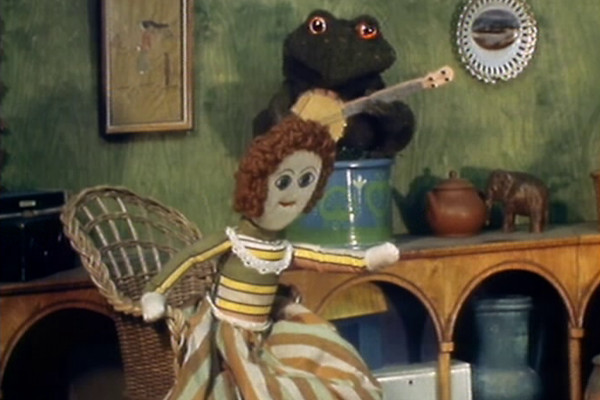
Bagpuss was never, even at the time, a modern programme, and an early scene here sees a minute of screentime given over to dancing shapes while a violin plays over the top. For fans of Madeleine the Rag Doll and Gabriel the Toad, then this is the episode that showcases them more than any other. The "mother and father" of the group, they tend to contradict and boss around the other, more fun, characters, and can consequently be a little irritating. In the Anorak Zone's Bagpuss microsite, Bagpuss & Co., I once ran a poll for the favourite character, which received 382 votes before the company hosting the poll closed down. Of those votes, only 6 – less than 2% - voted for Madeleine*. Note that Madeleine often has a bottle next to her, as if her part in the adventures is as the result of a nervous breakdown where she never gets up from her chair and drinks herself into oblivion.
Sandra Kerr, the voice of Madeleine, was, along with John Faulkner (Gabriel), an experienced folk musician, and her performances are based around this. Consequently appreciation of Madeleine and Gabriel depends upon personal taste, and whether you appreciate folk songs of English and Celtic traditions. Personally, while I listen to a lot of folk rock and swear by Arthur Lee, the song moments in Bagpuss are where it often grinds to a halt for me, the mice forced to use their mouse organ to accompany their proficient albeit grating melodies. Yet this episode is one of few exceptions, with Kerr's voice at its sweetest and most melodic, detailing more of a traditional nursery rhyme format than ancient folk song. Madeleine was once cruelly described on this site as "like Joan Baez on Mogadons", but, just this once, she manages to put on a decent show.
The late Oliver Postgate stated that the Madeleine doll was first used in an episode of Pingwings, a now largely-forgotten series that was his first puppet series from 1961-1965. Although the doll in the charming episode The Rag Doll doesn't look like quite like the Madeleine of the series, suggesting a misremembering of details, it was clearly an inspiration and was possibly remade for the programme.
* Should you care, Bagpuss came first with 55% of the vote, followed by the Mice and Yaffle.

Essentially just a sequel to The Mouse Mill, whereby the mice once again get one over on Yaffle, if only for a short time. Trying to narrow down the best Bagpuss character is hard, as the triumvirate of Yaffle/the Mice/Bagpuss is such a strong and mutually beneficial one. It's hard to imagine, for example, Yaffle working so well without the mice constantly goading him and pricking his pomposity.
As for the mice then this isn't, sadly, one of their finest outings. While normally performed by all three vocal performers with sped-up voices, here Janie Mouse appears to be voiced by Sandra Kerr in "real time", with an odd, Eliza Doolittle-style slant. The use of sped-up voices was experimented with almost as soon as sound was available, and other BBC childrens' programming – most notably Pinky and Perky - had used it. It's an unusual decision to run without it, but possibly the makers thought that a two minute monologue in the usual voice might be a little hard to take.
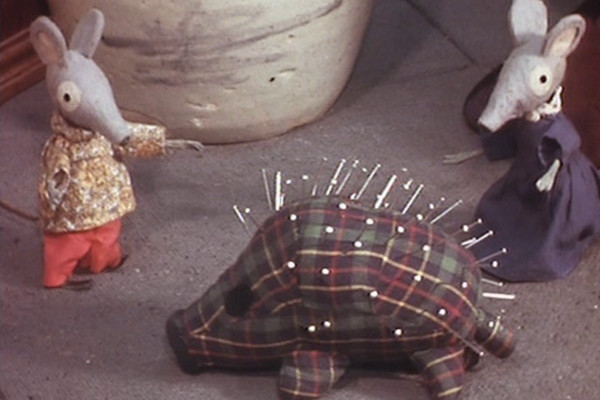
The Hamish does contain a lot of unfortunate racial stereotyping that places it firmly in the 70s, including an illustration of some "rich Arabs" driving a large car. However, such things aren't necessarily bad in and of themselves, more a product of their time, and the tale of Scottish "Tavish McTavish" and his bottle of "Scotch Mist" does have a kind of charm.
While such things are mentioned largely out of a sense of detail and historical perspective, they were not elements that Oliver Postgate held in any high regard. His autobiography admits that Ivor The Engine deliberately mocked the Welsh, and, while he stood for a liberal candidacy, he observed that, in his view, "The pottiness of ‘political correctness' had not yet infected our thinking." Most notable in this episode is that the songs use pre-existing melodies: the mice sing a song to the tune of Frère Jacques, while Gabrielle and Madeline sing a song about a porcupine to the programme's own theme tune.
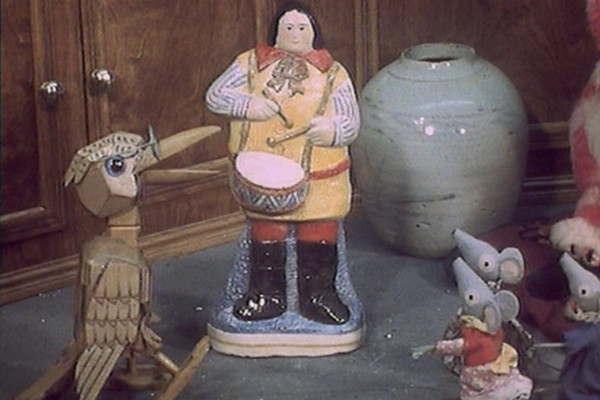
"I sometimes wish Miss Emily would bring things that aren't quite so broken" says Yaffle at the start of this episode. Although it's Emily's incantation that wakes up Bagpuss ("old fat furry catpuss...."), she's never seen with him when he's awake, making one wonder how they know of her existence. To say nothing of how a young girl can afford to buy a shop, and run it when it doesn't sell anything.
The Giant is arguably the least memorable of the Bagpuss episodes, one where even Oliver Postgate ends the narration with "well, anyway..." Based around a small figurine, the plot, such as it is, is made up of scraps of songs and nothing much of consequence.
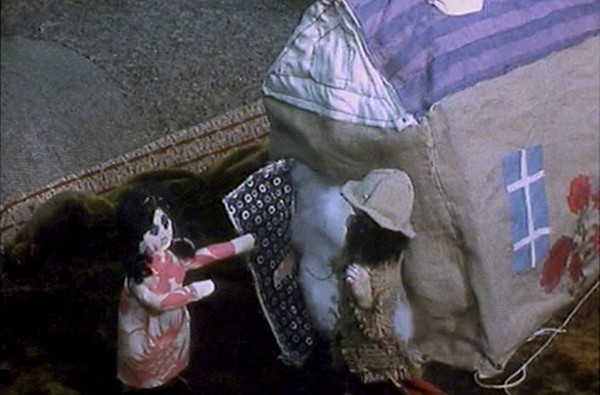
Uncle Feedle has a lot riding on it, given that it's the final episode of the series. While it has definite moments of charm, it perhaps doesn't end with any great revelations or profundity. While Bagpuss was written as stand-alone stories without any "season arc", the objects from prior episodes can be seen in some episodes, and this ends with a large collection, including the porcupine pin cushion, Bagpuss' Chinese "thinking hat", and what worryingly appears to be Pinhead's Lament Configuration Puzzle Box from Hellraiser. Also keep an eye out for the "Watch With Mother" sign on the bus the Mice drive.
One valid criticism of Bagpuss is that it only really exists to entertain, not to educate. While there is occasional learning involved (such as the distance from the Earth to the sun given in Flying), the majority of episodes are just fantasies, including this tale of a cloth man with an inside-out house. Yet despite not really encouraging its audience to grow in anything other than imagination, Bagpuss is a deserved classic. As always, the episode ends with the famous line "Baggy, and a bit loose at the seams. But Emily loved him." And there's not a dry eye in the house.